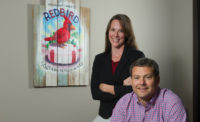In September 1952, arguably the most iconic scene of the classic show “I Love Lucy” aired.
Even today, most people are familiar with it: the hilarious episode featuring Lucy (Lucille Ball) and Ethel (Vivian Vance) biting off more than they can chew when they get a job at a candy factory – pun intended. The two end up fighting a losing battle against a conveyor belt of chocolates. As the belt continues to glide by quicker and quicker, Lucy and Ethel find themselves panicking to keep up, shoving chocolate into their mouths, their hats and down their shirts – all the while being judged by the world’s meanest boss, who shouts at the operator, “speed it up!”
This provides an analogy to today’s market conditions in the candy industry: the competition is cutthroat as brands adapt to changes brought on by the pandemic, including inflation, supply shortages and changing consumer preferences. Ecommerce, packaging’s impact on the environment, and demand for healthier ingredients all play a big role.
Let’s take a look at some of the change agents and how they’re igniting innovation in an industry that is diversifying with an increased focus on sustainable practices, social consciousness, connected packaging and healthy ingredients. We’ll also take a reality check on the viability of some of these ideas.
Recognized brands are paving the way.
M&M’S sing a new song
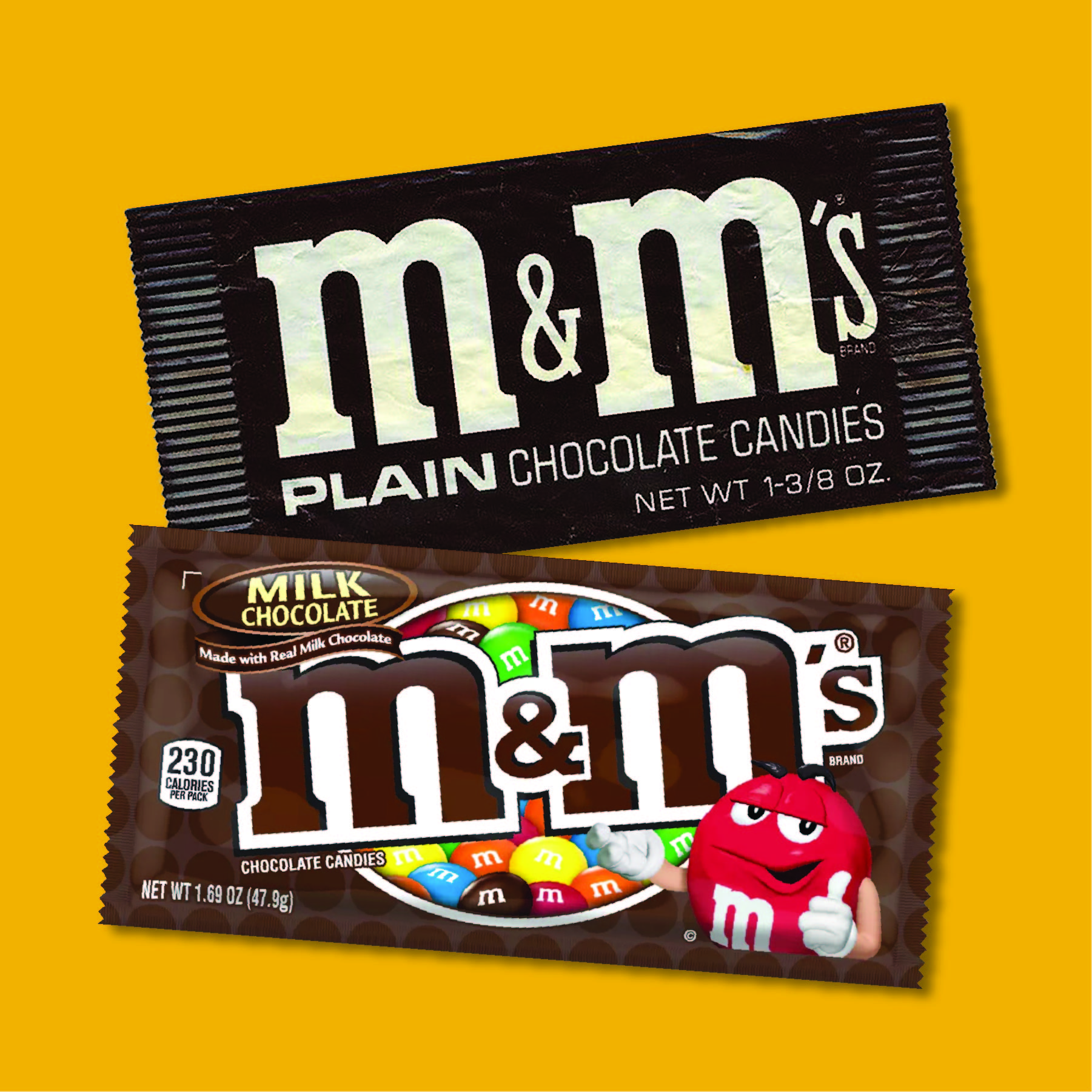 Photo credit: FORCEpkg
Photo credit: FORCEpkg
M&M’S, the small, button-shaped chocolate with its hard candy shell, has been around since 1941. The Mars-owned brand adopted the slogan, “Melts in your mouth, not in your hand” in 1954. Because M&M’S could be easily carried and not turn into a sticky mess, the candy was first sold to the U.S. military. Its popularity exploded as the familiar brown bag became a staple in movie theaters and along candy aisles everywhere.
But where does this brand truly make its mark today? Personalization. M&M’S can be personalized for any occasion: wedding gift bags, graduation, new baby, snarky sayings, you name it.
In 2021, M&M’S launched the “Let M say it for you” campaign. Consumers choose from a variety of witty and unique messages (a personal favorite is the “Not My Usual Passive Aggressive Apology” pack). Even better, each fun communication is linked to a playlist on Spotify. So, if you want to say “Congrats on the new job,” the playlist will have songs like Dolly Parton’s “Working 9 to 5.” This not only delights the recipient, but also allows the brand to reach more than 400 million consumers around the globe. It’s a smart mix of personalization and connected packaging.
Who says a classic can’t change?
 Photo credit: FORCEpkg
Photo credit: FORCEpkg
First introduced in 1928, Reese’s Peanut Butter Cups, owned by the Hershey Company, is one of the most popular candy brands — ever. It enjoys 62 percent higher market share than the next most popular brand and makes up nearly 50 percent of all sales in stores. And, there are 60 different varieties to choose from —everything from Reese’s Pieces and Reese’s White to Reese’s Thins and other line extensions like ice cream and sugar-free miniatures.
So how does Reese’s differentiate its vast line of products from one another? This is where the trend hits home: on pack.
Reese’s fans hit the jackpot. They can enjoy wrapped bars, flex packs, slide trays, corrugated gift boxes, sticks and more.
Reality Check No. 1
As for sustainability, this is where the brand has room for improvement. Candy wrappers are made from a mix of plastic and aluminum or paper and aluminum. Recycling plants are not able to separate these mixed materials to use them again, so they typically go to landfill.
If you ask any candy lover what they think of Reese’s Peanut Butter Cups, most will say it’s one of a kind. But within that familiar territory, there are a slew of options. And that’s what keeps this brand in the alpha position. In the words of the fictitious Carry Bradshaw: “I got to thinking about relationships and partial lobotomies. Two seemingly different ideas that just might be perfect together – like chocolate and peanut butter.”
Social awareness inside and out
The Pentawards are an annual packaging design competition and online hub for designers. Each year, it issues an international report that couples packaging trends with awards in their chosen trend categories. One of those trends for 2021 was “diversity and inclusivity,” highlighting the desire to celebrate diversity of individuals across the planet. Hershey’s joined the ranks with its Her/She campaign, while Skittles honored this trend with the Pride Month initiative.

Photo credit: FORCEpkg
Hershey’s Her/She
Launched in March, the Hershey's brand’s #CelebrateSHE campaign highlighted the words "SHE" and “HER” on the iconic milk chocolate bar as part of Women's History Month. According to the brand, the Hershey's bar's packaging is a reminder to celebrate the impact that “SHE” and “HER” make. Real examples of women’s creative work, including poetry, photography and illustrations, were showcased on each individual bar, celebrating the successes of women.
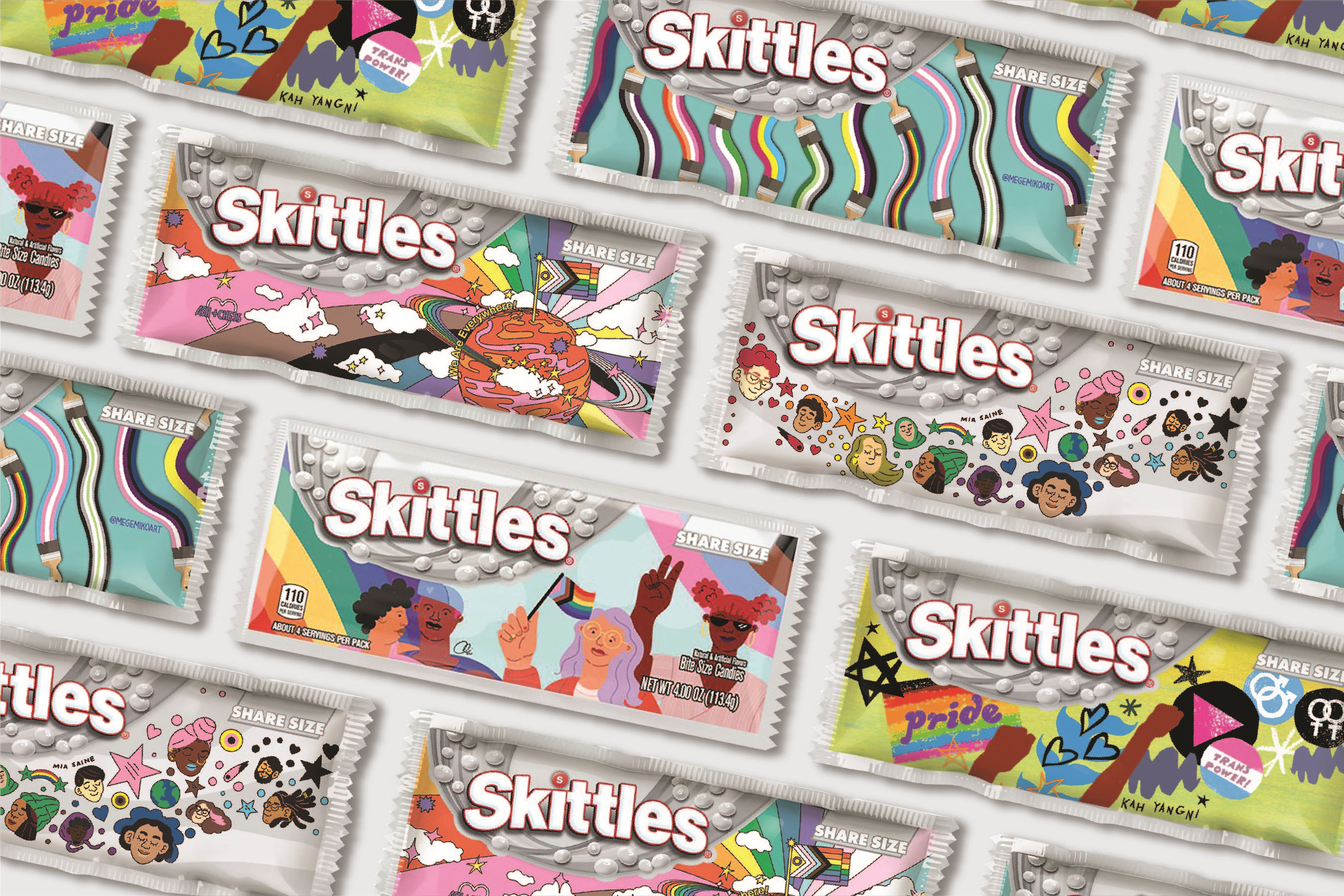
Photo credit: FORCEpkg
Skittles raises the bar on social awareness
For the past two years, Skittles has celebrated Pride Month with all-gray Pride packs, meant to show solidarity with the LGBTQ+ community. This year, the brand added a splash of the rainbow.
For the 2022 Skittles Pride Packs, Skittles has teamed up with GLAAD and six LGBTQ+ artists to design original packs to represent how they “see the rainbow” every day. While the candies themselves were still gray, the packaging was beautifully colored with art celebrating the LGBTQ+ community.
Both Hershey's and Skittles have honored the “diversity and inclusivity” trend while still inspiring a sense of fun.
The story on sustainability
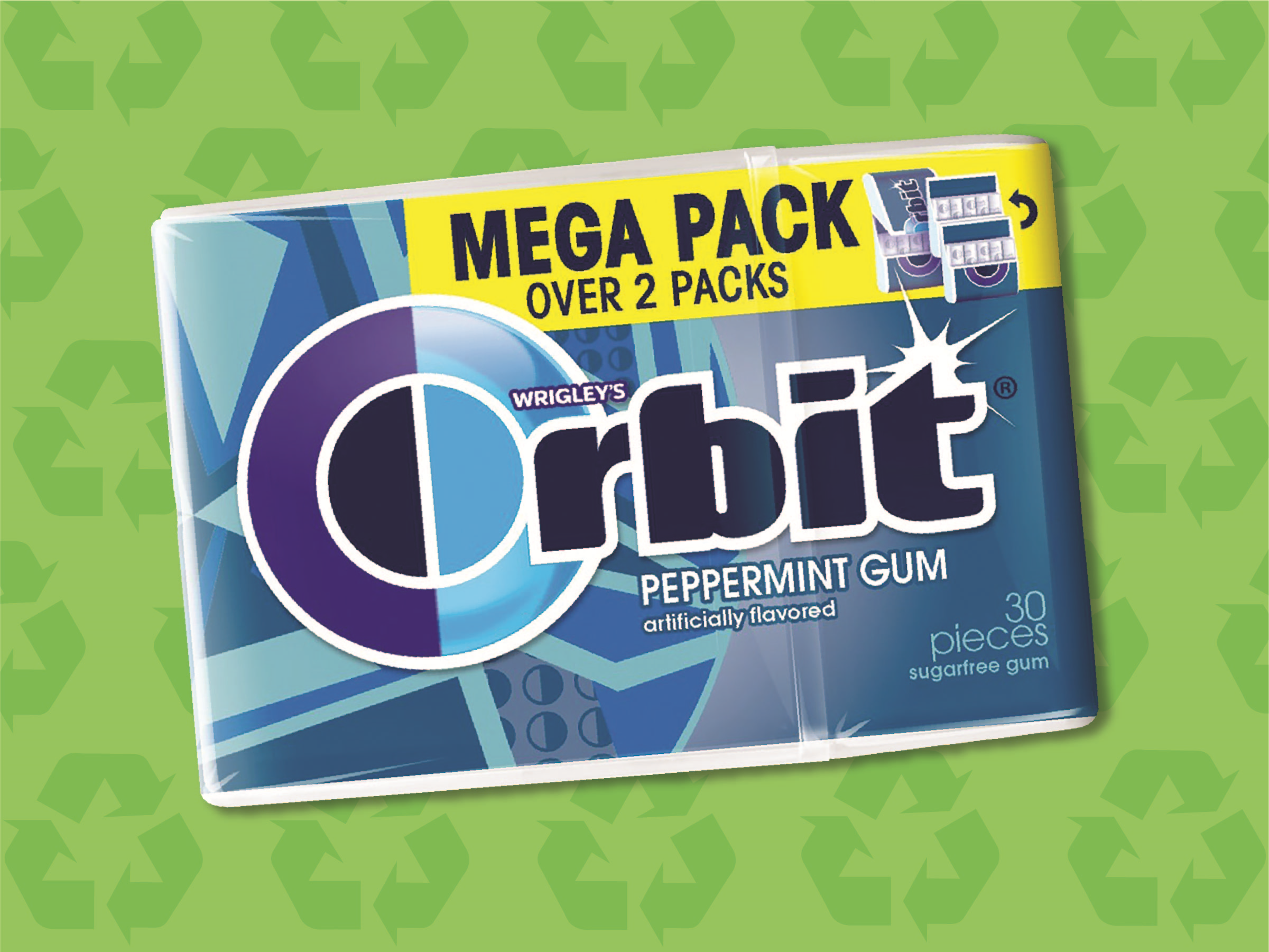 Photo credit: FORCEpkg
Photo credit: FORCEpkg
Until 2020, the candy industry was slow to adopt sustainability as a priority, when compared to other industries. However, many brands have picked up speed since then.
In March 2021, Mars announced a global initiative, called the Sustainable Packaging Plan. The plan details the company’s intention to redesign its packaging portfolio (which includes confectionery and pet food) to reduce “the packaging they don’t need, and to redesign the packaging they do need to ensure it’s reusable, recyclable or compostable.”
This includes more than 12,000 packaging components — as nearly half of Mars’ packaging is undergoing redesign or elimination. Pretty impressive, right? But has Mars made any actual movement on any familiar brands?
So far, one easy tweak is the increased use of flexible packaging in the candy industry, including Mars brands like Orbit Gum, Skittles and M&M’S. Flexible packaging requires less water and energy to manufacture and transport, and generates small quantities of greenhouse gasses. Thanks to its efficiency in product-to-package ratios, flexible packaging ultimately results in less consumer waste being sent to landfills.
This Orbit flex pack also comes with “How2Recycle’s(R)” on-pack, a step-by-step guide on how to recycle each part of the pack. Pretty cool, right?
Reality Check No. 2
Yes, but when it comes to sustainable packaging, confectioners are in the same space as all packaging designers — the intent is there, but circular recycling is still a challenge.
Recyclers are springing up with new technologies, but volume and quality are key issues. Recycling technologies that are past the testing phase only work with waste that meets criteria in sortability, cleanliness, labeling, coloration, etc. The infrastructure does not yet exist to handle the volume we produce.
Healthy ingredients
Let’s start with the reality check.
Reality Check No. 3
In a recent episode of HBO’s “Real Time with Bill Maher,” the host slammed America’s move from “fat acceptance to fat celebration.” He added: “healthy at any weight is an unchallenged lie people tell themselves so they can go on eating whatever they want.”
But confectioners are listening.
There is a rising demand among consumers for healthier ingredients. Recent research shows that 6 out of 10 candy shoppers say that health matters, especially when it comes to children’s nutrition. Today, the vibrant colors and flavors that people desire can be achieved with natural ingredients instead of synthetics. Many of the healthier options are coming from European and indie brands. A few examples:
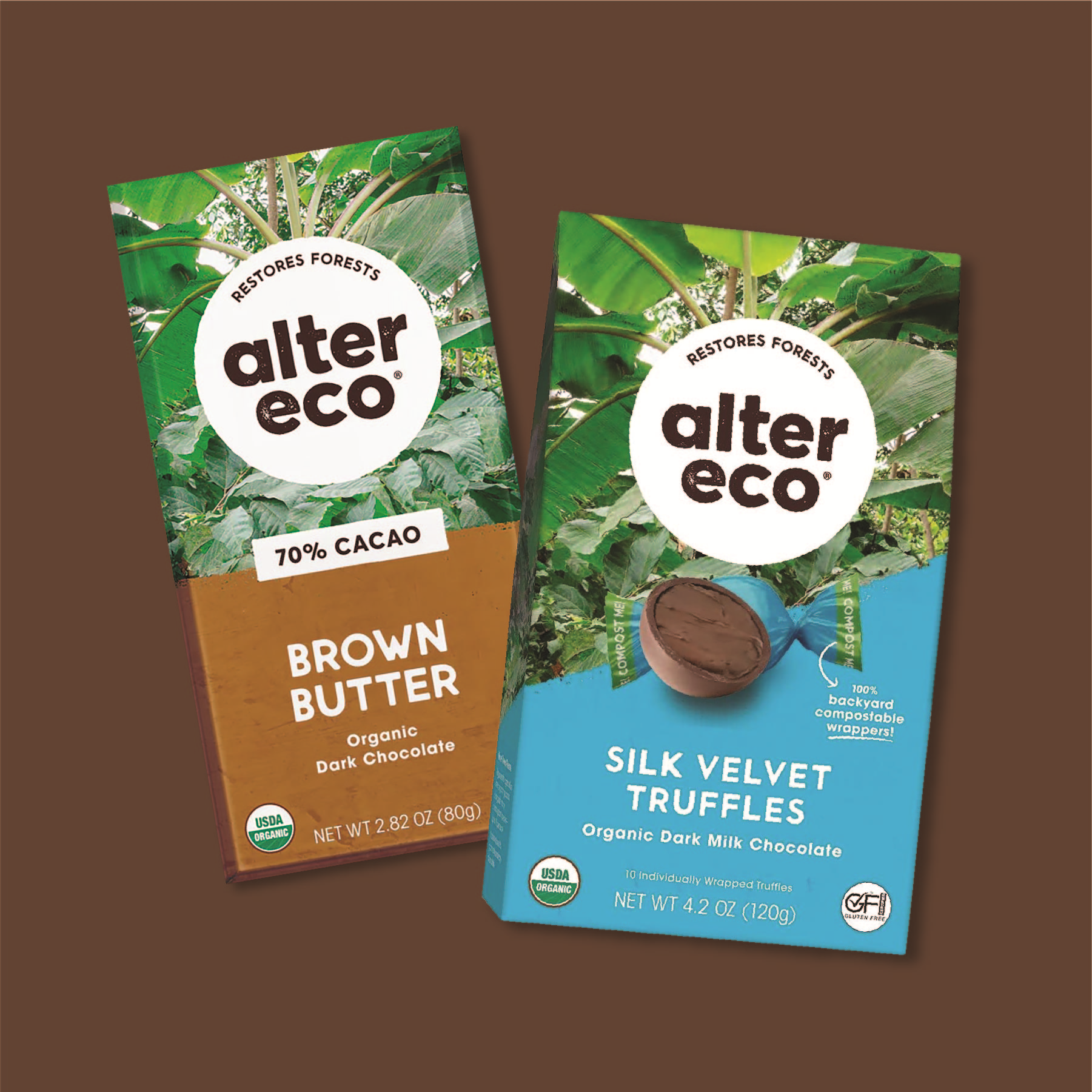
Photo credit: FORCEpkg
Alter Eco Chocolate
Touted as “The cleanest, greenest chocolate,” Alter Eco Chocolate is made with raw cane sugar, brown sugar and organic dark chocolate. The packaging boasts 70% cacao front and center and also includes the message “Restores Forests and Empowers Farmers,” a nod to its sustainability and human rights initiatives. The packaging imagery also underscores the brand’s sustainable credentials as it uses beautiful natural scenery and materials.
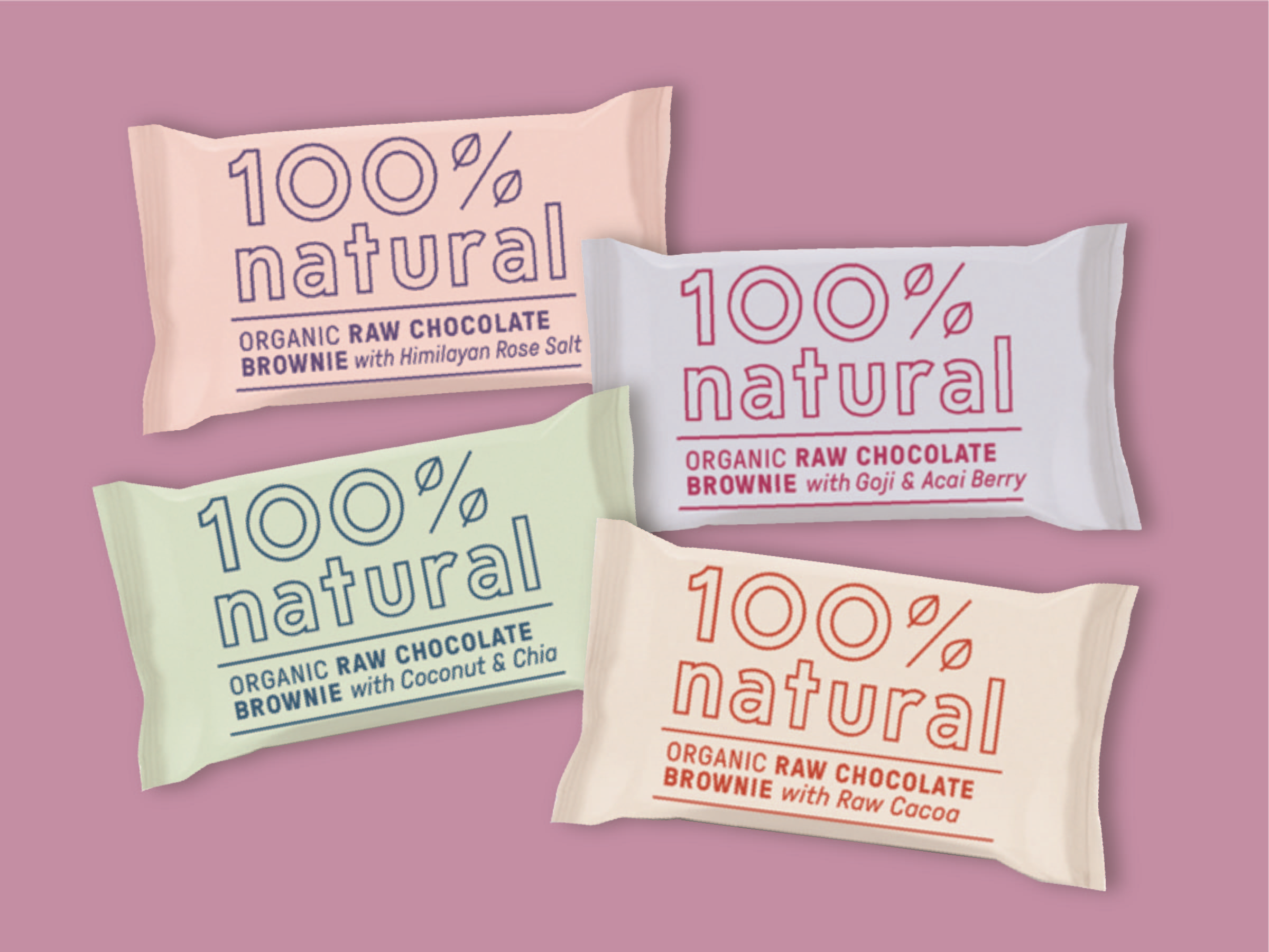
Photo credit: FORCEpkg
100% Natural
100% Natural comes from a UK mother-daughter team that is known for its delicious, nourishing raw chocolate brownies and sustainably sourced ingredients, such as acai and goji berries. The packaging is clean, simple and to the point.
More brands are creating healthier candy options made with organic and locally sourced ingredients, fruit and nuts, and reduced or no sugar. There is also a market for keto-friendly, dairy-free, gluten-free, and nut-free treats that appeal to consumers.
Storytelling
The way a product is packaged can create a dynamic, engaging story about a brand, drawing upon a multitude of features. These include the design itself, the shape and size and technical features, and the copy used on the packaging. Also a Pentawards category, packaging as storytelling is hot right now.
Happy Pills is a great example of this trend — a create-your-own candy experience. This ecommerce brand gives consumers the chance to create their own “happy pills,” such as “Because There is No Football” happy pills or “Washing Machines that Break Down,” happy pills. It’s super clever and sure to bring a smile to a recipient’s face.
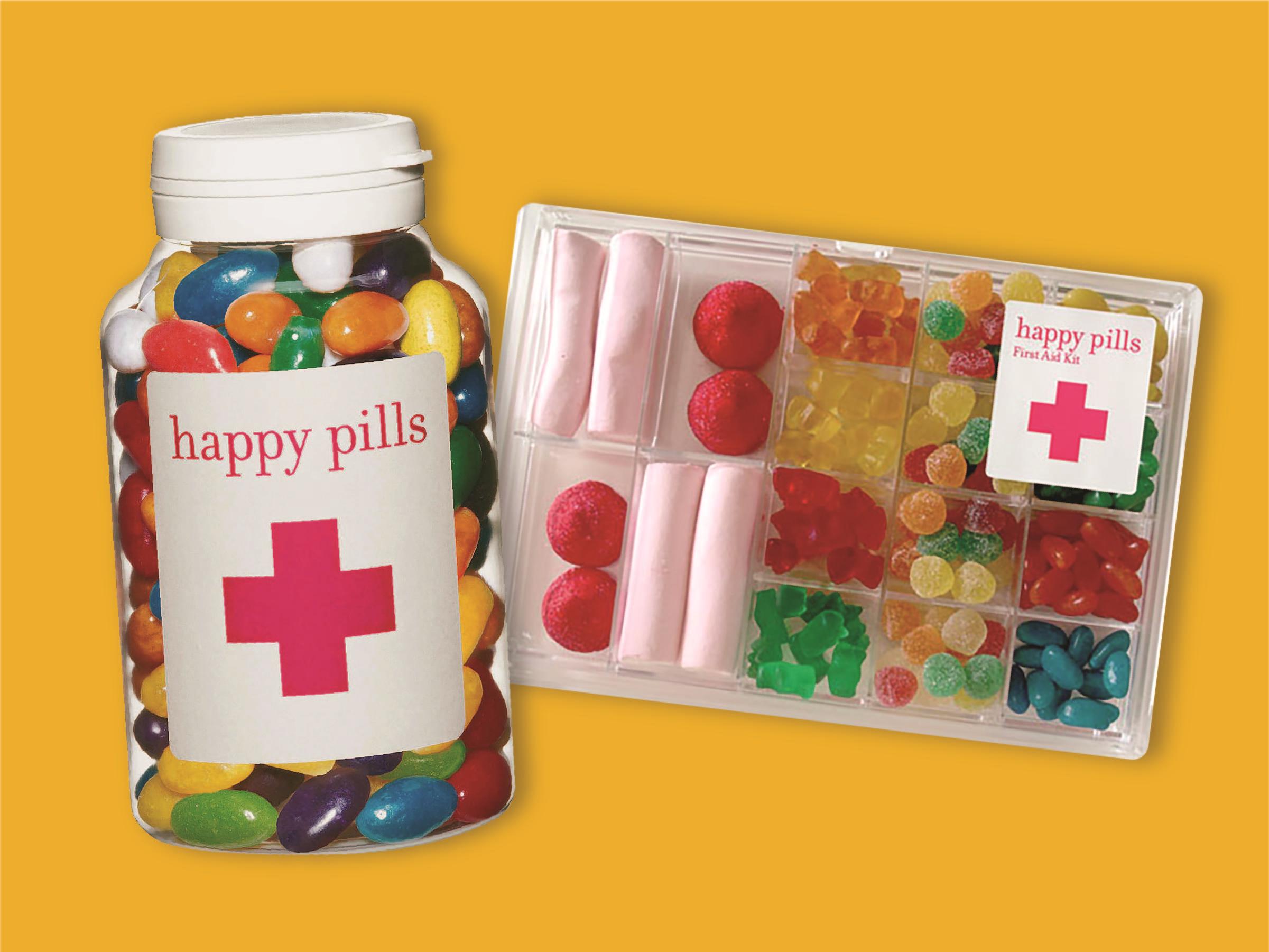
Photo credit: FORCEpkg
Reality Check No. 4
This might sound like a “duh” moment, but while this is a fun concept, child safety is obviously a concern. The CDC warns that every year nearly 60,000 children are sent to hospitals after accidentally getting into medications, with toddlers most at risk. This may put a damper on storytelling for this brand.
So, even though the candy industry may have been lagging to embrace trends other industries have capitalized on, it’s gaining speed now. It’s exciting to embrace what the future holds for candy — and packaging—aficionados everywhere.




